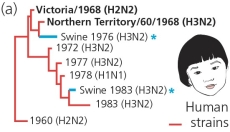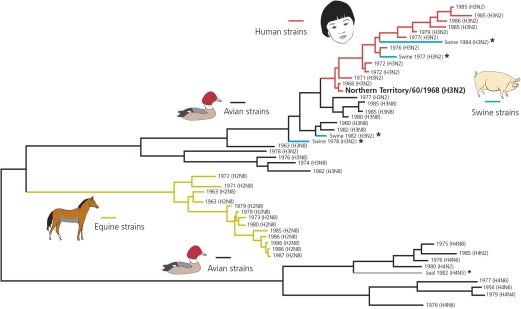Question 5
(Multiple Choice)
Analysis of the phylogeny of flu viruses reveals that the two 1968 strains (see the accompanying figures)both carry neuraminidase N2,but their hemagglutinins are distantly related (H2 and H3).Moreover,before the global pandemic of 1968,human flu viruses had never carried H3.This observation suggests that ________. 

A) H3 was acquired from a nonhuman strain which, in turn, allowed the virus to infect humans on a global scale
B) flu strains, when present together in the same host cell, can trade genes
C) the 1968 human flu strain acquired its H3 gen from a bird virus
D) All of these conclusions are supported by this data.
Answer